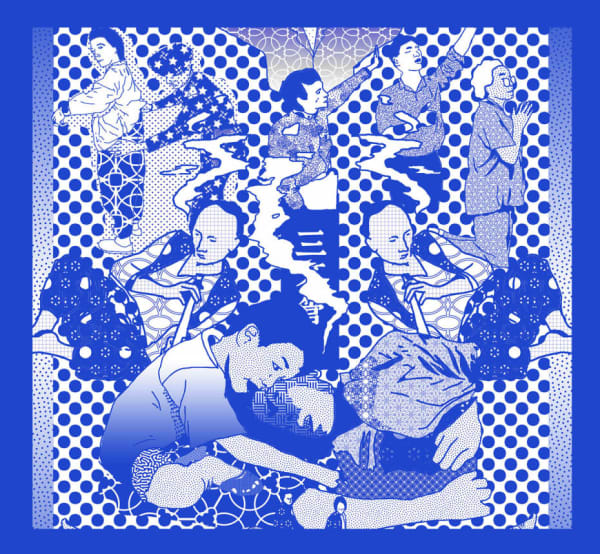
Students travel to Barcelona for Plastic Justice project

- Written byAnnika Loebig
- Published date 01 May 2022

As our Plastic Justice project comes to an end, five of the students involved travelled to Barcelona to work on a lobbying brief on microplastics.
Visiting one of their project partners Elisava, the Design and Engineering Faculty of Universitat de Vic – Universitat Central de Catalunya, the BA Graphic Communication Design students worked on one of Plastic Justice’s final intellectual outputs. Called the Plastic Justice verdict, it involved a policy brief which will be used to influence and lobby on issues surrounding micro-plastics.
We caught up with Libby Higgins and Max King to reflect on the project and talk about their takeaways from the trip.
Hi both! First of all, could you tell us why you decided to participate in the Plastic Justice project?
Libby: It isn’t often that a designer gets to explore the world of policy briefs and legislation making. Being able to interact with academic topics and current issues in this way within my design education felt like a productive addition to my experience of Central Saint Martins.
Max: I have always been interested in exploring the different possibilities of materiality within my physical work and seeing that Plastic Justice had a large push on the exploration of new, exciting sustainable materials – it was a perfect match.
What was your role during the trip?
Libby: All students performed a similar role, both speaking in-front of the class and working within more intimate, cross-university groups in research tasks. I also took on an organisational role in my group, preparing the presentation which we delivered at the end of the week.
Max: The work was environmental policy creation, a field I had no knowledge in, but hearing specialists talk about every aspect of this huge topic of international law was interesting and I left the week being able to reel off case studies and considerations to take into account while proposing environmental policy.
Throughout the week we had to work in groups to establish our own policy that would deal with a specific environmental issue, primarily surrounding microplastics. Mine was about landfill, so my group worked on a policy that addressed the extremely varied recycling and reusing programmes around the EU such as the DRS (deposit return scheme) and spoke about implementing a more unified system in order to minimise the large differences.

What are your highlights or takeaways from the trip?
Max: There were many highlights so I will just list a few: Being able to see another design school, Elisava, especially the fact that it is a school focusing mainly on product design and engineering was very interesting. The lectures that we had were also very insightful, mainly because we are from creative fields, so international environmental law and policy are not something we are too familiar with. I had never been to Barcelona so being able to explore the beautiful city was fantastic, especially being accompanied by those that I had met from the other institutions. Some late nights were had!
Libby: In my design practice, I am researching and exploring alternative pedagogical practices, so to shift from exploring this theoretically to being able to engage with another model of education physically was an unmissable opportunity. Speaking to students and staff from schools across Europe was also a great experience for community building beyond the wall of our College.
What climate-related activities are you hoping to pursue during your time at Central Saint Martins?
Libby: I often make books in my design practice, and it has therefore been so helpful to understand the impact that craft practices can have on the environment. I try to consider climate implications in a small way in every project so that it becomes a maintainable and core element of my design practice.
Max: I sadly only have one more term left at College so the Digital Innovation Season is what I am most looking forward to. The programme of events that focus on climate, sustainability and future protection through the lens of technology is right up my street.
Anything else you'd like to share?
Max: If there is a part two of Plastic Justice, I recommend applying to take part!
-

Alison Pong | Hong Kong Walled City